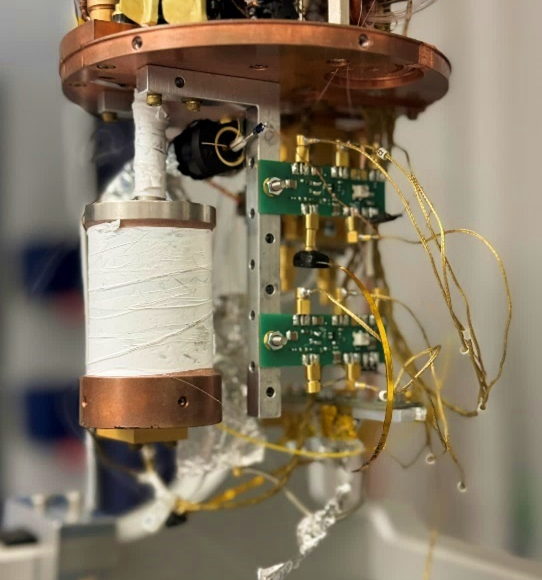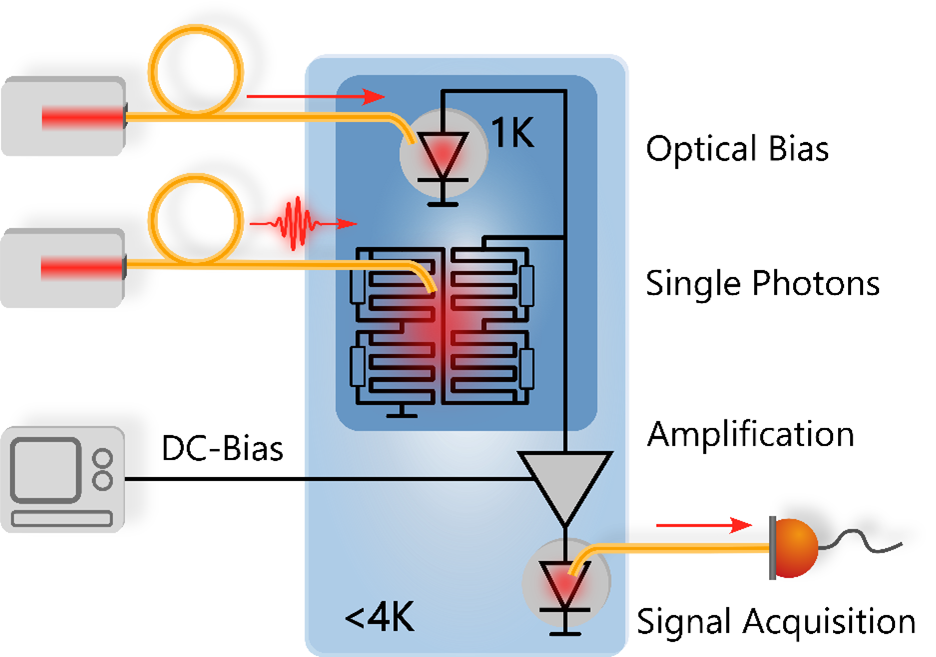Our main tool for quantum optics are single photon detectors. We especially use superconducting single-photon detectors since they are one of the best performing detectors on the market. However, these detectors require cryogenic operation temperatures. That means for us that we can only operate a limited number of detectors in a single cryostat. To conduct experiments with more detectors and show more elaborate setups, we require more scalable approaches for our detector operation. The scalability of the operation of superconducting detectors is limited by the heat conduction of the cables between the “cool”-stages of the cryostat and the room temperature electronics.
In their recent work, Frederik Thiele et al. replace conventional cables for signal transmission with glass fibers for the operation. To convert the detection signal, the scientists from the Mesoscopic Quantum Optics group operate a laser diode which send light pulses to the readout electronic. They additionally developed an intermediate low power cryogenic amplifier to increase the detection signal amplitude. This approach has shown as a proof-of-principle experiment that the heat load of superconducting single photon detectors can be reduced while maintaining a high performance.
For more details, please find the open-access article on APL Photonics. https://doi.org/10.1063/5.0209458


